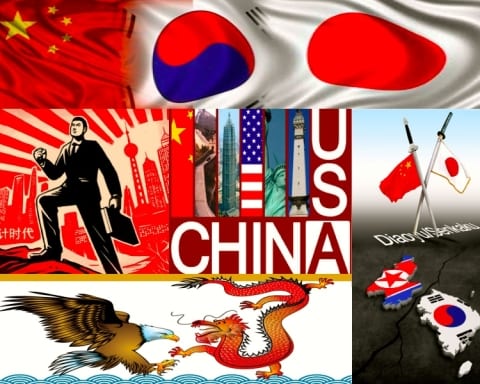Northeast Asian Integration is a term often used recently among regionalists and/or European scholars to sell the prototypical European model as panacea for the prevailing conflicts in Northeast Asia. The European model, besides continuing debates over virtually everything, sure is a success in Europe. Embodied in this model is the prevailing notion that any European argument is better solved in a parliament in Brussels than in a trench in Verdun. It was not by chance that the European Union was awarded the Nobel Peace Prize in 2012 for advancing the causes of peace, reconciliation, democracy and human rights in Europe.
What proponents of a 1:1 application of the European model to Northeast Asia fail to see is the differing inherent geopolitical and historical exposition of Europe and Northeast Asia; it is not the cultural and linguistic similarities or differences among European or Northeast Asian nations that enabled union building here or inhibited it there. The omitted variable in the constructivist equation is the unilateral security architecture within Europe in form of NATO —provided by the United States— since the 1950s and lack thereof in basically all of East Asia. In Northeast Asia there was, instead, a political and ideological division with American backed, capitalist South Korea and Japan on one side and communist China and North Korea (with the Soviet Union projecting power in the region) on the other.
The Cold War saw a united front, with the U.S. defending Western Europe, which was extended eastwards after the collapse of the Soviet Union. In contrast, from a security perspective Northeast Asia is largely where it was since the end of the Korean War; a U.S. protected Japan and South Korea, Communist China and its protégé North Korea. Much has changed since 1953 indeed; the world has seen China’s immense growth since its reform and opening and a substantial Chinese assertiveness towards what it regards its sovereign territory in Hong Kong and Taiwan. In addition, Chinese – South Korean relations been normalized, North Korean – Chinese relations have deteriorated and despite unresolved conflicts over islands and Japanese war crimes, leaving aside North Korea, the region is engaging in trilateral trade of as much as 3.4 Trillion USD per year (source: TCS – trilateral statistics 2014). Unchanged, however, remains the security architecture of the region, where Chinese hegemonic ambitions and American containment clash, prompting Air Defense Identification Zones and pivots to Asia.
While the probability of open conflict between the involved parties is low and hopeful wishing for the redundancy of military alliances may arise, the situation for now still remains; as long as Northeast Asia is not united under one joint security alliance, a political union of states in the fashion of a European Union in this region is unlikely to occur. In other words; unless the United States ceases to project power in the Pacific and stop to being the number one security guarantor for South Korea and Japan, some sort of Shanghai Cooperation Organisation will not be able to replace it. In the unlikely event that Northeast Asia will establish or be integrated into a military alliance, it’s goal would be “to keep the Americans out, the Japanese in, and the Chinese down” (analog to NATO Secretary General Lord Ismay on the goals of NATO in Europe). In the Northeast Asian case this would be akin to the Chinese keeping themselves down in a military organization they would dominate.
A much more promising approach is to concentrate on the existing commons in Northeast Asia; trade and economic cooperation. Peeking at Southeast Asia, the Association of Southeast Asian Nations (ASEAN) represents an auspicious alternative to the European model; while ASEAN is built on a Political-Security (APSC), Economic (AEC) and Socio Cultural (ASCC) Community, the economic dimension is so far the best pronounced. With an established common market internally and FTA agreements with China, Korea, Japan (ASEAN +3) as well as Australia, New Zealand and India and negotiations taking place with the EU, ASEAN is widely perceived as economic entity. As for its foreign affairs, the ASEAN Way based on the principles of non-interference, informality, minimal institutionalism, consultation and consensus, non-use of force and non-confrontation, can be described as regional multilateralism.
In the future ASEAN is bound to grow bigger economically and closer politically and culturally; an ASEAN identity is being promoted and a monetary union is being discussed. ASEAN leaders seem to push things less than their European colleagues, leaving South East Asia time and space to develop based on the economic and political situation at hand and not following wishful, idealistic chimeras of overambitious bureaucrats. The Trilateral Cooperation Secretariat (TCS) situated in Seoul is doing just that; made up of “the Three” in ASEAN +3; The People’s Republic of China, South Korea and Japan, the TCS is, compared to ASEAN and EU, a low profile international organization that facilitates summits between the three countries’ foreign and other ministers and runs several projects to promote peace and prosperity among its members.
Considering the above one may conclude that Northeast Asia is in fact on the right way; instead of trying to integrate the region into one political union lacking the institutional unity necessary, Northeast Asia should continue to concentrate on economic tri- and multilateral cooperation; to the extent that all agents: institutions, enterprises and individuals become highly interconnected and the possibility of conflict becomes too dangerous, too dreadful and too detrimental to ever be considered.







